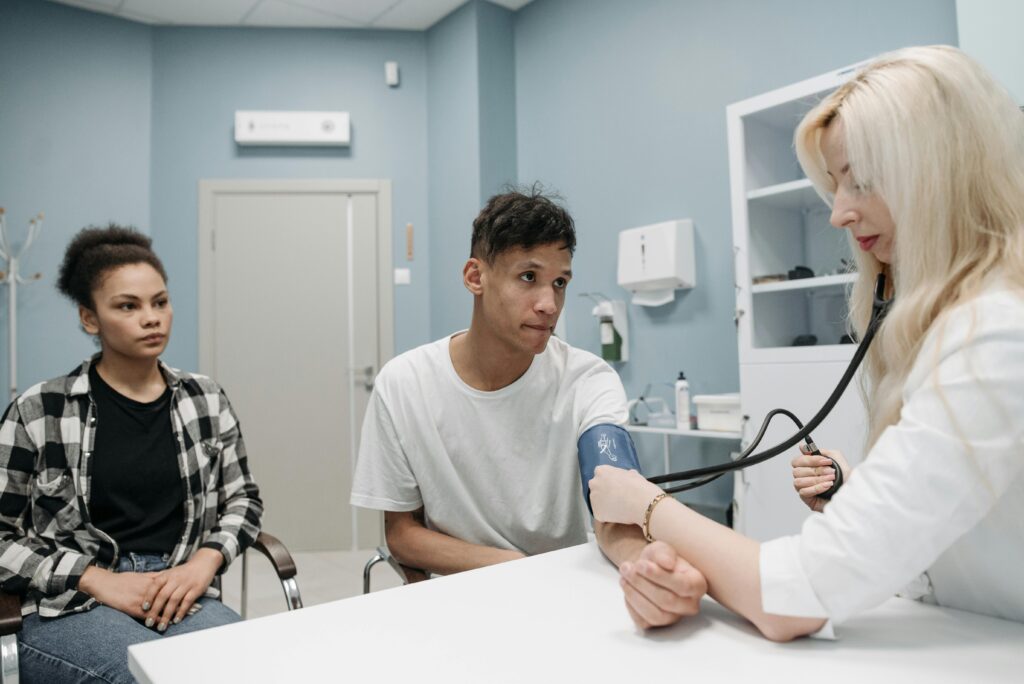Dear friends,
It’s my pleasure this month to hand over this newsletter greeting to guest writers and my esteemed colleagues Kathryn Jantz and Eva Batalla-Mann. Enjoy!
Best,

Rishi Manchanda, MD, MPH.
We live in an exciting moment in the evolution of our understanding and collective will to achieve better healthcare outcomes by moving upstream to address health-related social needs. And we now have new incentives and tools to do so through value-based payment models and health plan benefit designs.
The engine of this growing, integrated approach is healthcare-community partnerships, in which health systems, health plans, and other providers contract with community-based organizations (CBOs) to provide the social services that can help patients with unmet social needs improve and sustain their health. Evidence shows that these partnerships have the potential to deliver improved health outcomes, reduced utilization, and cost savings. But creating the financial models that enable such partnerships to launch and thrive is complicated and challenging—sometimes so challenging that it can derail partnerships altogether.
This month, HealthBegins is proud to launch a newly expanded and improved Return-on-Investment (ROI) Calculator, created in collaboration with the Commonwealth Fund and the SCAN Foundation, to help partners successfully navigate this challenge.
The primary innovation of the relaunched calculator is a Quick-Start Mode that allows users to gain quick insights on potential ROI for specific social services for which there is compelling evidence about impacts on healthcare utilization. This new version of the calculator makes it easier for CBOs and healthcare partners to calculate the ROI of social needs interventions using prepopulated data drawn directly from national averages, benchmarks, and research.
For example, using this tool, a health system might partner with a CBO to provide case management by community health workers for pregnant patients with chronic health conditions, supporting them to secure needed social services and reduce barriers to timely care. A Medicare Advantage plan could contract with a partner to provide home-delivered medically-tailored meals to ensure consistent nutrition for patients undergoing cancer treatment. A medical clinic could team up with a legal-aid organization to help patients stay safely housed by fending off evictions and holding landlords to account for unhealthy housing conditions.
In addition to its primary function of estimating returns, the calculator creates an awareness of some of the opportunity and benefits of health and social care integration for both healthcare and community partners. It provides a common financial language, promotes a more equitable and sustainable division of returns, drives data collection and analysis for the business case, reduces uncertainty by helping to quantify financial risk, and supports a structured approach for partnership development.
As partners embark on new collaborations to address health-related social needs, we also urge them to look beyond the inherent limitations of ROI, which tends to focus on short-term financial returns of programs and investments, and seriously consider VOI—value on investment—which requires us to define and evaluate the broader value that can be generated by social needs and health care equity interventions. By this we mean the potential benefits, from financial to institutional to social, that range beyond the direct effect of social interventions on healthcare utilization and can prove profoundly important. These valuable benefits could include improved patient satisfaction and engagement, employee satisfaction and retention, fulfillment of regulatory and accreditation requirements, alignment with organizational mission, strengthened community connections, improved sustainability for CBOs, gains accrued to partners and other institutions, and broader impacts on equity.
We created this tool using a deep familiarity with the strengths and needs on both sides of a health-and-social-care partnership—as well as a commitment to making such partnerships equitable and sustainable for all parties. And we plan to support the courageous leaders entering these partnerships through upcoming training and technical assistance programs, because we want, above all, scalable and sustainable collaborations to improve health and advance equity. (Stay tuned on these future programs here.)
Robust partnerships are urgently needed as policymakers and practitioners look upstream to address root causes of poor health and high, avoidable, healthcare spending. As you reach across sectors to establish or strengthen clinical-community partnerships, we applaud your efforts and look forward to supporting you at each stage.
Best,
Kathryn Jantz and Eva Batalla-Mann
Featured content
Providing Health Equity for Immigrants in a Time of Crisis
This moment presents an opportunity for healthcare leaders to harness the national attention focused on immigrant care to build investments, policies, and protections to improve care for these communities long-term.
HealthBegins Brief: Addressing Climate Health Inequities With The Community Health Needs Assessment
This HealthBegins Policy and Practice Brief invites every healthcare organization to immediately begin addressing the impact of climate change on health at the community level and with community participation.
Immigration Enforcement in Healthcare Settings: How to Prepare and Respond
Many of our healthcare partners are asking how they should prepare for potential ICE encounters on their premises and respond in the interim to concerns among patients and staff. These questions, answers, and resources provide some guidance.



